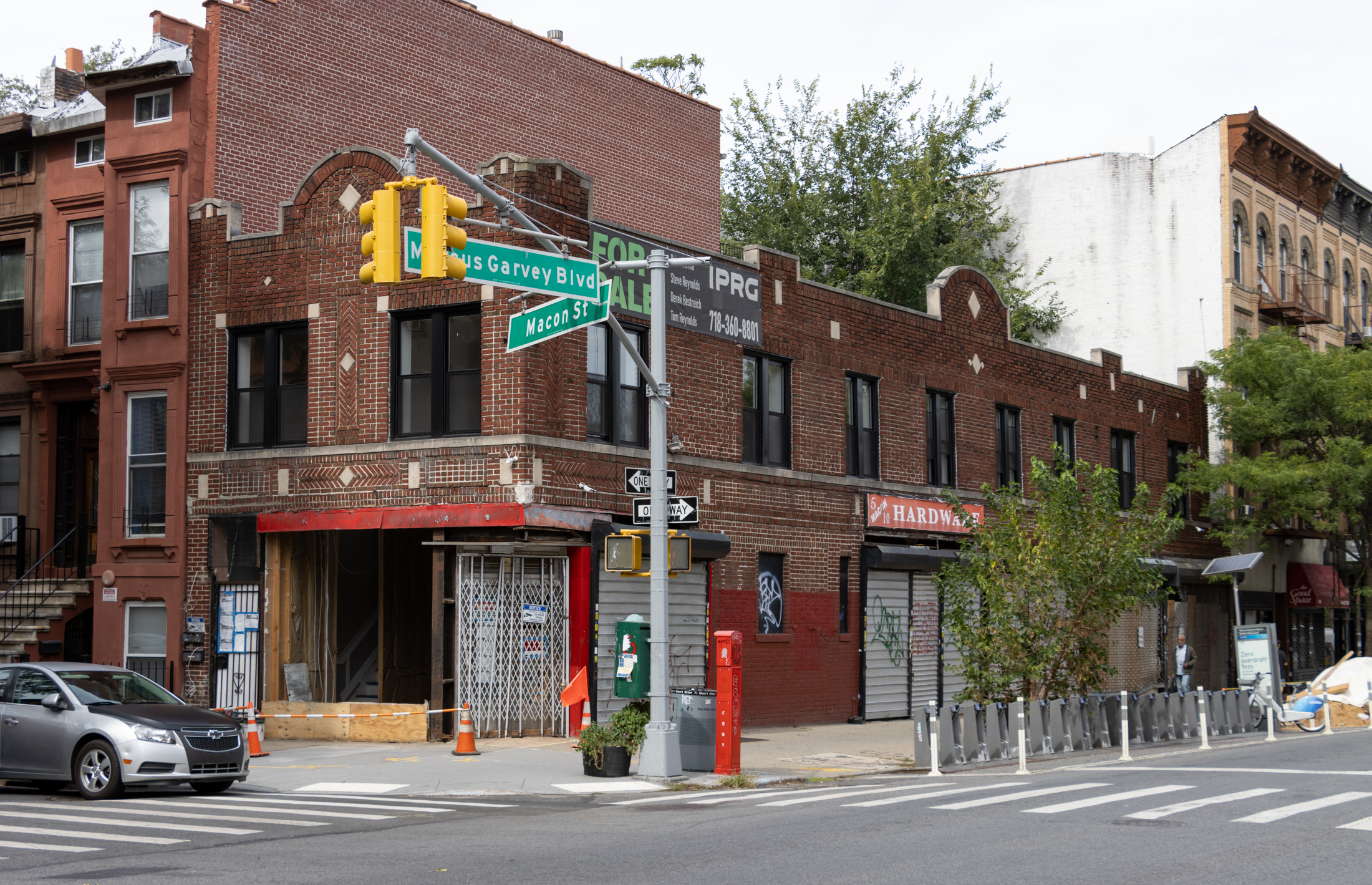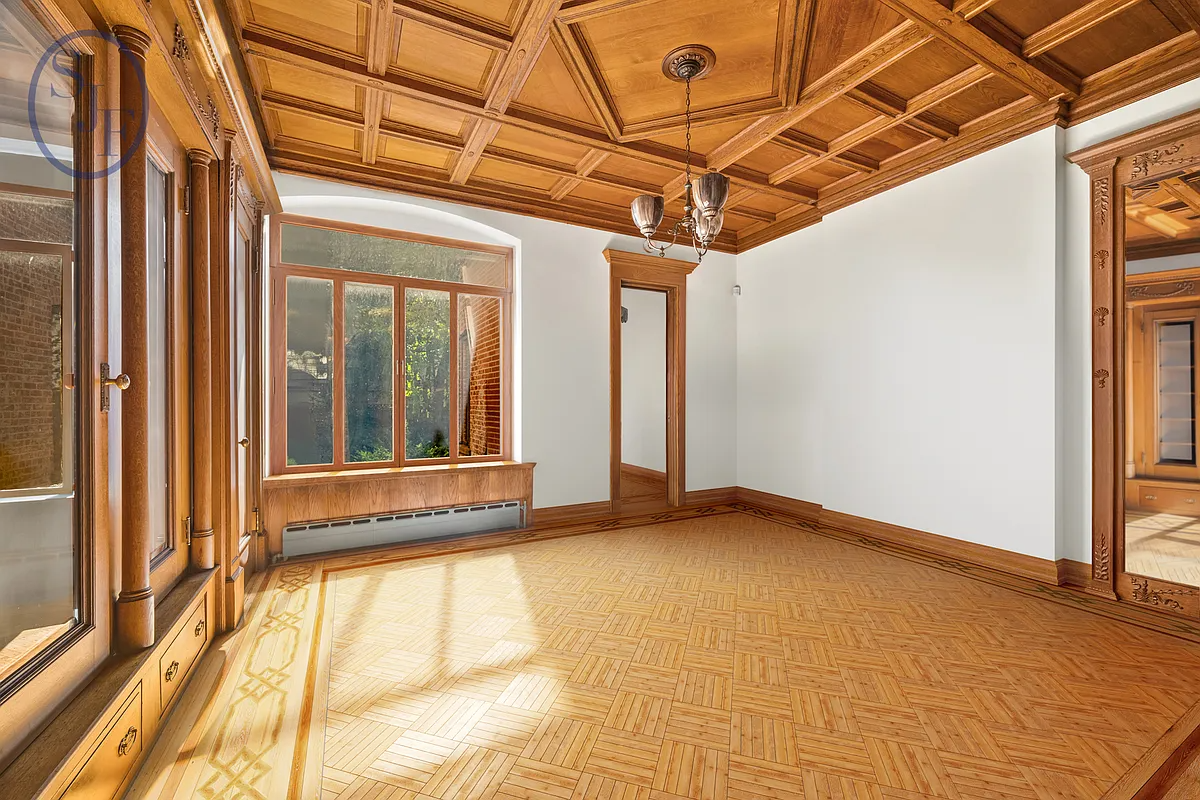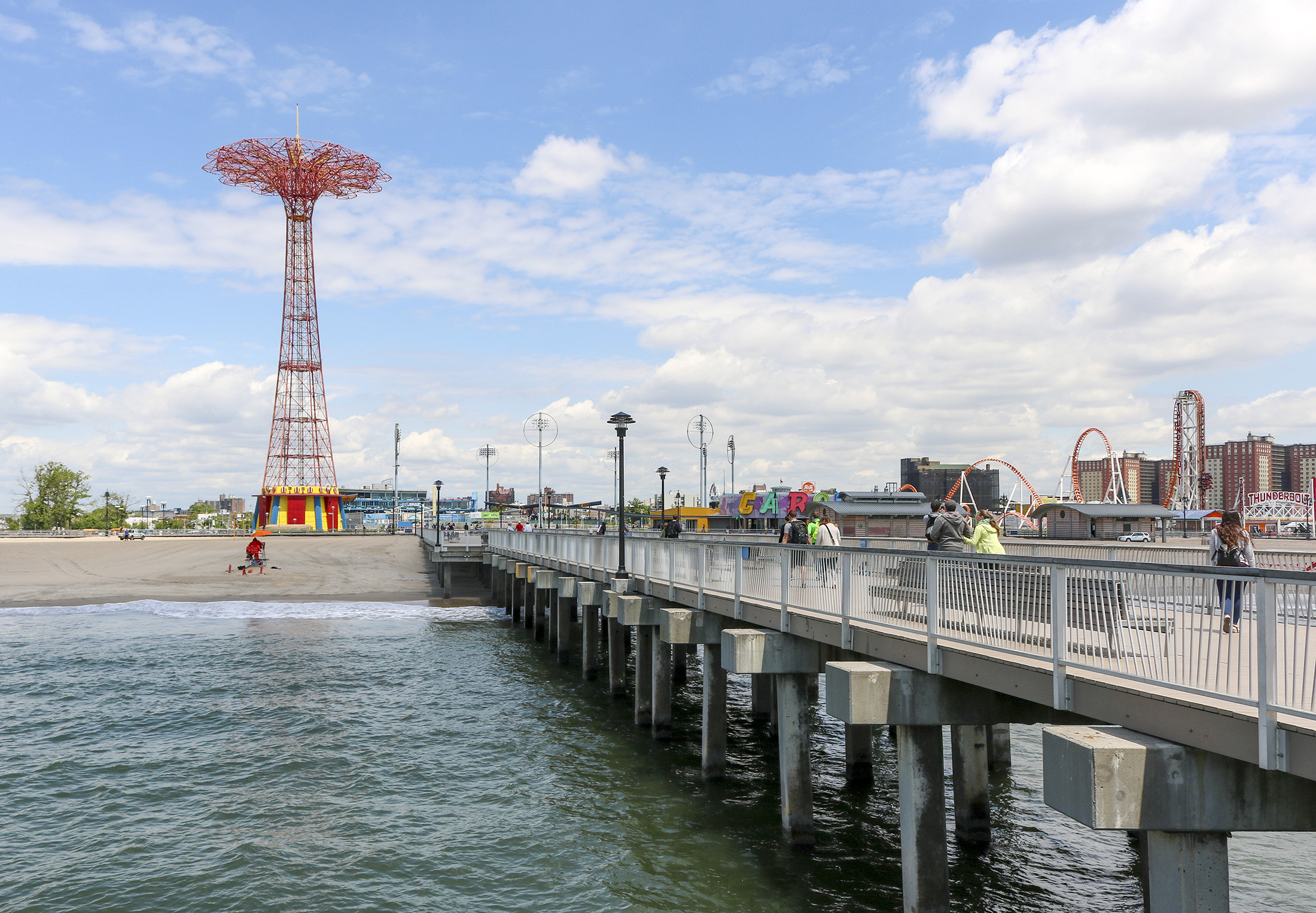New House Planned at 414 Waverly
Last night at Community Board 2’s Land Use Committee Meeting, Urban Pioneering presented a rendering for a 4-story, 2-family town home at 414 Waverly Avenue between Gates and Greene. (It’s the house on the left. A parking lot is currently there.) The design, which the developer has already been working with the Landmarks Committee for…


Last night at Community Board 2’s Land Use Committee Meeting, Urban Pioneering presented a rendering for a 4-story, 2-family town home at 414 Waverly Avenue between Gates and Greene. (It’s the house on the left. A parking lot is currently there.) The design, which the developer has already been working with the Landmarks Committee for a few months, is a carriage house style, and members of the board appreciated that the 4th floor would be a lighter color than the rest of the building, as well as set back 15 feet. The entire building would be 50 feet deep on a 100 foot deep lot. The Land Use Committee gave its stamp of approval on the spot. Looks pretty tasteful, don’t you agree? GMAP





I like the plainness of this building. I also like many other types of buildings. I am glad this is being built.
Minard, if you are still reading today, I’d like to please know your opinion of the buildings at 3rd and Bond. I like them but I am not a trained or experienced architect as you are. I read and learn from your posts. Thanks.
(Now will get back to reading the topic.)
benson my pleasure. I figure I may as well spread the wisdom around during a slow economy. Looks like Mexico is creaming France too. o===========<(O) o==============<(O)
Architect66;
You’re hitting it out of the ballpark today!!! Thanks for these posts -excellent points.
Hey bfarwell – the reason that designs in Landmarks districts tend to be so timid is that most owners are not willing to allow it. The first thing that they demand of us as architects is “get it approved.” Hell, half of them wouldn’t use an architect at all if signed and sealed plans weren’t required for a permit.
Landmarks will tell you that they consider each project on a case by case basis, and that their guidelines are “flexible.” What this means is that going through approval, you will be subject to the whimsical interpretation of the Landmarks reviewer.
My interesting, creative, and scholarly exploration of the carriage house as a building type may be fun and interesting, and result in great architecture. However, to the eye of the recently graduated preservationist bureaucrat reviewing things at landmarks, there may be something “not quite right” about it. As an architect you can disagree with the bureaucrat, and even win the case for your design. But you’ll lose months of time doing that.
Unless the building owner / developer is a collaborator and willing to take the risk that comes with a drawn out public process, the best you can hope for is mediocrity.
And then you have to face the community board. Please let’s not go there. At least the landmarks people have refined and educated opinions.
“While I don’t think that the ho-hum design is any reflection on the architect”
I couldn’t disagree more. If your response to constraints is to draw up boring disney village, you’re not a very good architect. You’re a boring disney village architect.
“While I don’t think that the ho-hum design is any reflection on the architect, who is likely capable of much better, it certainly does demonstrate the impact of the Landmarks process on the quality of architecture. Definitely the process is slowed down, but instead of giving rise to better and more thoughtful design, the result is a timid, disney-fied architecture of displacement. ”
QOTD.
It’s not just that it’s historicist, it’s that it’s boring historicist. I mean, carriage houses are awesome, an you could have done any number of great things within the language of the existing buildings.
This building being boring-as-hell is just as much the architect’s fault as it is LPC. Without the LPC constraints, I suspect we would have an equally snooze-worthy building, just without a cornice or lintels.
It would take a courageous developer to demand anything other than a “rapidly approvable” design in this location. The facade is certainly better than a lot of new construction, thanks to the enforcement of Landmarks’ preferences – no fedders or PTAC grilles, use of brick masonry, etc. On the other hand, it isn’t very interesting.
While I don’t think that the ho-hum design is any reflection on the architect, who is likely capable of much better, it certainly does demonstrate the impact of the Landmarks process on the quality of architecture. Definitely the process is slowed down, but instead of giving rise to better and more thoughtful design, the result is a timid, disney-fied architecture of displacement.